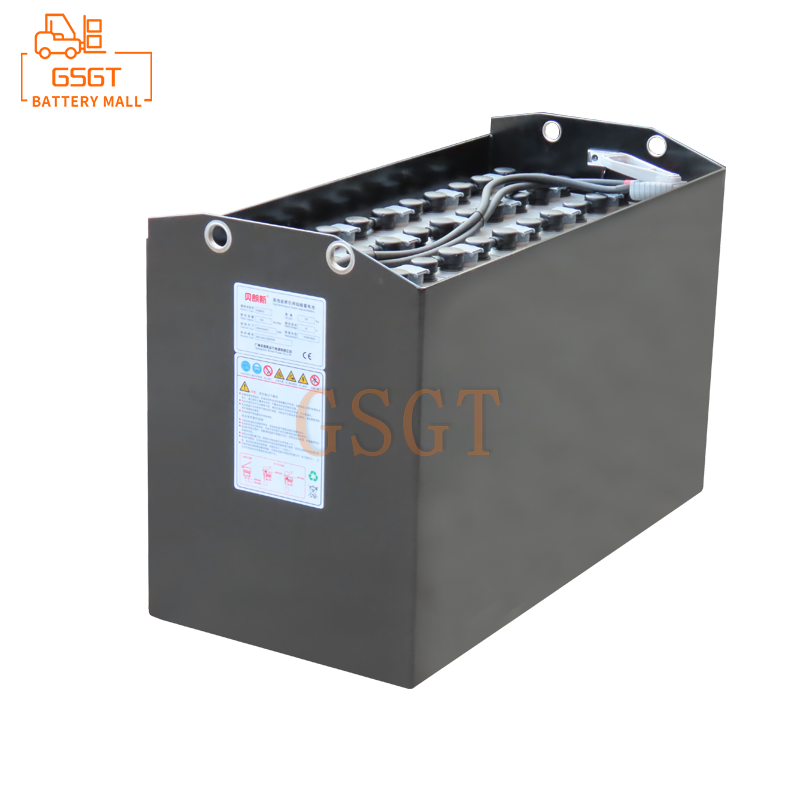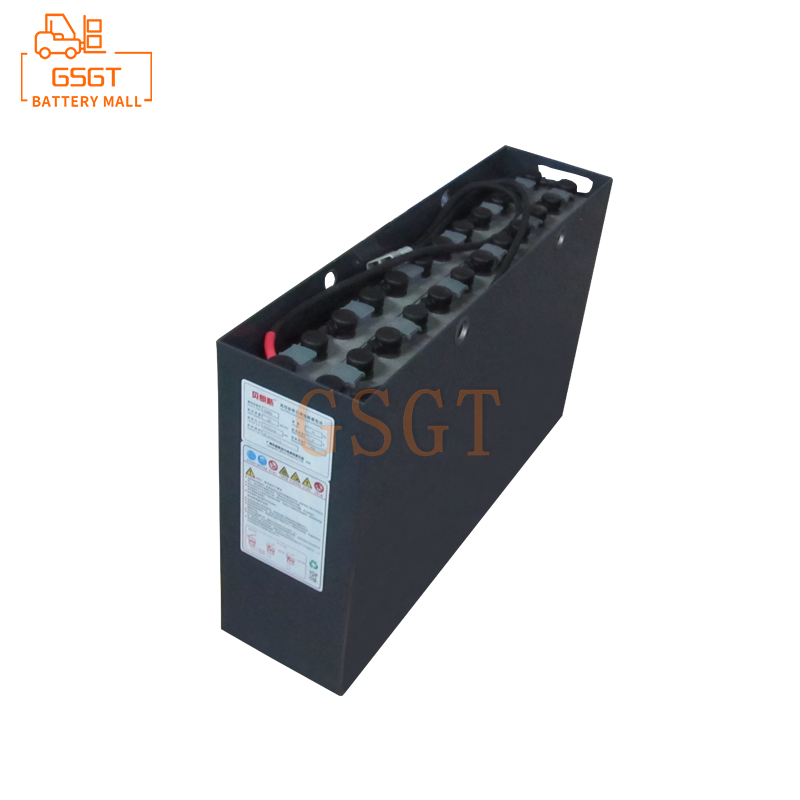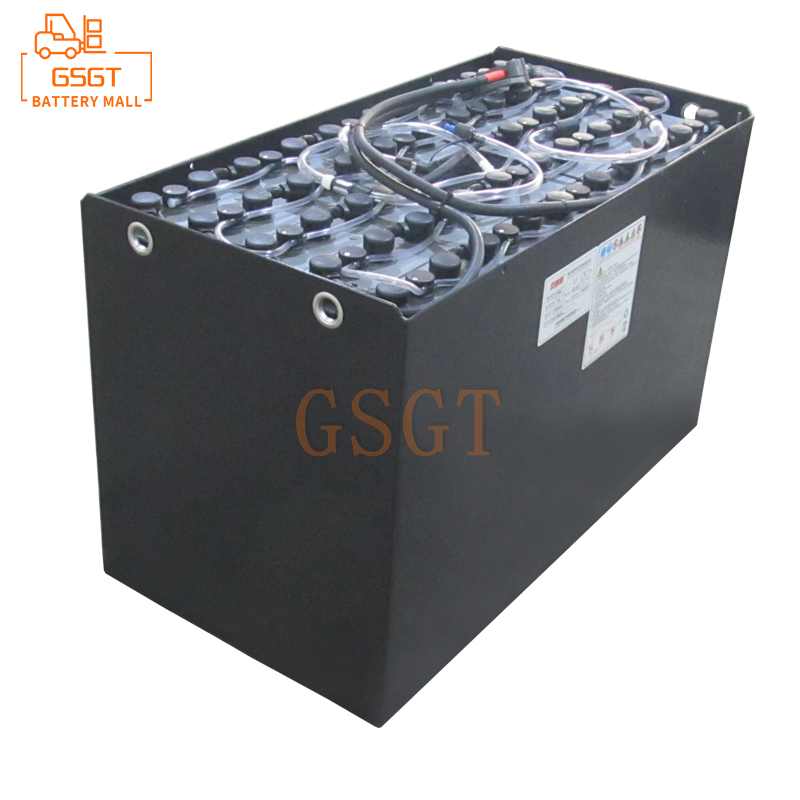Time:2025-06-12 11:29:18
Browse:602
In the modern logistics and warehousing industry, forklifts, as indispensable handling equipment, their efficient operation cannot do without a stable and reliable power source. Lead-acid batteries have become the mainstream choice for forklift power systems due to their advantages such as mature technology and reasonable cost. Inside lead-acid batteries, the plates, as the core components, play a decisive role in the battery's performance, lifespan and safety. A thorough understanding of the mechanism of action of the plates and the mastery of scientific maintenance methods are of great significance for ensuring the normal operation of forklifts and reducing operating costs.
1. Structure and Types of Lead-Acid Battery Plates for Forklifts
The plates of lead-acid batteries are mainly composed of two parts: the grid and the active material. The grid is usually made of lead-antimony alloy or lead-calcium alloy. Its function is to provide mechanical support for the active material and conduct electric current. The structural design of the grid has a significant impact on the performance of the plates. A reasonable grid structure can ensure uniform current distribution and improve the conductivity and strength of the plates. The active substance is the key to achieving the electrochemical reaction. The active substance of the positive plate is lead dioxide, which is brownish in color. The active material of the negative plate is spongy pure lead, which is bluish-gray in color.
According to different manufacturing processes, plates can be classified into paste-type plates and tubular plates. Paste-coated plates are made by coating lead paste on the grid and then going through processes such as drying and curing. This type of plate has a simple manufacturing process and low cost, and is widely used in various lead-acid batteries. Tubular plates are made by filling active substances in glass fiber tubes or plastic sleeves and then placing them on the ribs of the grid. Their advantages include that the active substances are less likely to fall off, a long service life, and they are suitable for deep cycle discharge conditions. They are widely used in equipment such as forklifts that require frequent charging and discharging.
2. The Core Role of Plates in Lead-acid Batteries
(1) Carrier for electrochemical reactions
The charging and discharging process of lead-acid batteries is essentially an oxidation-reduction reaction between the active substances on the plates and the sulfuric acid in the electrolyte. During the discharge process, the spongy lead on the negative plate reacts with sulfuric acid, loses electrons to form lead sulfate, and the electrons flow through the external circuit to the positive electrode. Lead dioxide on the positive plate gains electrons under the action of sulfuric acid and is also converted into lead sulfate. During the charging process, under the influence of an external power source, this reaction proceeds in reverse. Lead sulfate is reconverted into lead dioxide and spongy lead on the positive and negative plates respectively, while generating sulfuric acid, thus restoring the battery's electrical energy. The quality and quantity of the active substances on the plates, as well as their bonding state with the grid, directly determine the efficiency of the electrochemical reaction and the capacity of the battery.
(2) The Key to Energy Storage and Release
The main function of the plates is to store and release electrical energy. When the forklift is in operation, the battery converts chemical energy into electrical energy through electrochemical reactions on the plates, providing power for the forklift's drive motor, hydraulic system, etc. When the forklift stops working for charging, the plates convert electrical energy back into chemical energy and store it. The performance of the plates directly affects the charging and discharging efficiency and cycle life of the battery. High-quality plates can maintain good electrochemical reaction activity during multiple charge and discharge cycles, reduce the shedding of active substances and the sulfation of plates, thereby extending the service life of the battery and ensuring the stable operation of forklifts for a long time.
(3) Core Factors Affecting Battery Performance
The quality and condition of the plates have a decisive influence on various performance indicators of lead-acid batteries. The higher the content of active substances on the plates and the moderate porosity, the greater the capacity of the battery will be. The better the electrical conductivity and the lower the resistance of the plates, the higher the charging and discharging efficiency of the battery will be, and it can provide a larger discharge current to meet the high current requirements during forklift start-up and heavy-load operation. In addition, the corrosion resistance and anti-aging performance of the plates are also directly related to the service life of the battery. In the actual use of forklifts, frequent charging and discharging, as well as vibration and other working conditions, will accelerate the aging of the plates. If the performance of the plates is poor, problems such as plate deformation, active material shedding, and sulfidation are likely to occur, leading to a decrease in battery capacity, an increase in internal resistance, and ultimately making it impossible to use normally.
3. Common Faults and Cause Analysis of Lead-Acid Battery Plates in Forklifts
(1) Plate vulcanization
Plate sulfation is one of the most common faults in forklift lead-acid batteries. It is mainly manifested as the formation of white and hard lead sulfate crystals on the surface of the plates. These crystal particles are coarse and difficult to be converted into active substances during the charging process. The main reasons for the sulfation of the plates are as follows: First, the battery has been in a state of low charge for a long time. After discharging, it is not charged in time, resulting in a large amount of lead sulfate depositing and crystallizing on the plates. The second reason is that the electrolyte level is too low, and the upper part of the plate is exposed to the air, where it undergoes oxidation with oxygen and then reacts with sulfuric acid to form lead sulfate, which in turn leads to sulfidation. Thirdly, if the density of the electrolyte is too high or the temperature is too low, it will also accelerate the formation of lead sulfate crystals. Sulfation of the plates can lead to an increase in the internal resistance of the battery, a decrease in capacity, and in severe cases, even prevent the battery from working properly.
(2) Shedding of active substances
During the operation of a forklift, frequent vibrations and charge and discharge cycles will gradually loosen and cause the active substances on the plates to fall off. The shedding of active substances is mainly concentrated at the bottom of the plates. Excessive accumulation can cause a short circuit between the positive and negative plates, resulting in severe self-discharge of the battery and a drop in voltage. The reasons for the shedding of active substances include: poor manufacturing process of the plates and unstable combination between the active substances and the grid. Excessive charging current causes the plates to heat up and the active material to expand and fall off. If the battery has been in use for too long, the plates will age and the mechanical strength of the active material will decline.
(3) Plate deformation
Plate deformation is usually manifested as plate bending, warping or cracking. This is mainly due to the excessive current and excessively high temperature during the charging process, resulting in uneven stress within the plates. Or during the installation process, the plates are deformed due to external force compression. Plate deformation can damage the internal structure of the battery, causing uneven spacing between the plates, increasing the risk of short circuits, and also affecting the normal progress of electrochemical reactions, reducing battery performance.
(4) Plate corrosion
The grid of the plates will corrode under the action of the electrolyte, especially in acidic environments and high-temperature conditions, the corrosion rate will accelerate. Grid corrosion will lead to a decrease in the mechanical strength of the plates, a deterioration in electrical conductivity, and eventually cause the plates to break, resulting in the battery being unable to operate normally. Overcharging, excessive impurity content in the electrolyte, and excessively high ambient temperatures during use can all accelerate the corrosion of the plates.
4. Maintenance Strategies for Forklift Lead-Acid Battery Plates
(1) Correct charging and discharging management
Timely charging: Forklifts should be charged promptly after use to prevent the battery from remaining in a state of low power for a long time. When the battery power drops to about 70% to 80% of its rated capacity, it should be charged to prevent sulfation of the plates. At the same time, overdischarge should be avoided. When the battery voltage drops to the minimum allowable value, use should be stopped immediately and charging should be carried out.
Control the charging current and time: During the charging process, the charging current and time should be strictly controlled in accordance with the requirements of the battery manufacturer. Generally, the constant current - constant voltage charging method is adopted. The initial charging current should not be too large to avoid the heating of the plates and the shedding of active substances. In the later stage of charging, when the voltage reaches the set value, it should be switched to constant voltage charging until the battery is fully charged. Avoid overcharging. Overcharging will cause a large amount of gas to be produced on the plates, accelerating the shedding of active substances and plate corrosion.
Regularly perform deep discharge and equalization charging: To activate the active substances on the plates, it is recommended to perform a deep discharge on the battery at regular intervals, reducing the charge to a lower level before fully charging. In addition, for forklifts that use multiple sets of batteries in series, due to the performance differences among each battery, regular equalization charging can keep the power of each battery consistent and extend the overall lifespan of the battery pack.
(2) Reasonable maintenance of the electrolyte
Maintain an appropriate electrolyte level height: Regularly check the electrolyte level height, which is generally 10-15mm higher than the top of the plate. When the liquid level is too low, distilled water or special lead-acid battery replenishment fluid should be added. Do not add tap water as it contains impurities that can affect battery performance. When adding the electrolyte, it should be done after the charging is completed to prevent the electrolyte from overflowing during the charging process.
Monitoring the density of the electrolyte: The density of the electrolyte is an important indicator reflecting the charging status and performance of the battery. Regularly measure the density of the electrolyte with a hydrometer, determine the charging status of the battery based on the measurement results, and adjust the charging strategy in a timely manner. Generally speaking, during the charging process, the density of the electrolyte will gradually increase; During the discharge process, the density will gradually decrease. If abnormal density of the electrolyte is detected, such as being too high or too low, it may indicate a battery malfunction and further inspection and handling are required.
(3) Daily inspection and maintenance
Visual inspection: Regularly inspect the appearance of the battery to check if the plates are deformed, cracked, or corroded, and to inspect the battery casing for any damage or leakage. If white crystals or black powder are found on the surface of the plates, it may be due to sulfation of the plates or the shedding of active substances. Timely treatment should be carried out.
Inspection of connection parts: Check whether all connection parts of the battery are firm and whether there is any loosening or oxidation. Loosening of the connection parts will lead to an increase in contact resistance, affecting the charging and discharging performance of the battery. Oxidation can reduce the conductivity of the connection parts and even cause local overheating. For the oxidized connection parts, they should be sanded clean with sandpaper and coated with a special battery terminal protector to prevent re-oxidation.
Temperature monitoring: The optimal operating temperature range for lead-acid batteries is generally 20-25 ℃. During use, it is necessary to pay attention to monitoring the battery temperature and avoid long-term use in high or low temperature environments. If the temperature is too high, the use should be suspended. Wait until the battery cools down before charging or using it again. If the temperature is too low, insulation measures can be taken, such as installing an insulation cover on the battery, to enhance its performance and lifespan
(4) Professional maintenance and upkeep
Regular professional inspection: It is recommended to send the forklift lead-acid battery to a professional maintenance institution for inspection at regular intervals. Use professional equipment to conduct a comprehensive inspection of the battery's capacity, internal resistance, voltage and other parameters, promptly identify potential problems with the battery, and take corresponding repair measures.
Professional repair and treatment: For batteries with faults such as plate sulfation and active material shedding, professional repair equipment and methods can be used for repair. For example, for plates with mild vulcanization, pulse repair technology can be adopted. Through high-frequency pulse current, lead sulfate crystals can be broken up to reconvert them into active substances. For plates where the shedding of active substances is not severe, repair can be carried out by replenishing active substances. However, it should be noted that the performance of the repaired battery may not be fully restored to the level of a new battery, and the cost and effect of the repair need to be comprehensively evaluated.
5. Conclusion
The lead-acid battery plates of forklifts, as the core components of the battery, play a crucial role in electrochemical reactions, energy storage and release, as well as battery performance assurance. However, during actual use, the plates are prone to faults such as sulfation, active material shedding, deformation, and corrosion, which can seriously affect the performance and lifespan of the battery. By taking correct charging and discharging management, reasonable electrolyte maintenance, daily inspection and maintenance, as well as professional maintenance and care measures, the occurrence of plate faults can be effectively reduced, the service life of lead-acid batteries can be prolonged, the operating efficiency of forklifts can be improved, and the operating costs of enterprises can be lowered. With the continuous development of new energy technologies, although new battery technologies are constantly emerging, lead-acid batteries will still occupy an important position in fields such as forklifts for a considerable period of time in the future. Therefore, in-depth research on the role and maintenance of plates has significant practical significance and value.

$2450

$1060

$3050

$5710

MESSAGE
Professional And Efficient
Security
Affordable Price
Professional Services